The task before a reviewer varies widely. If you want to be a big shot, you need to write about what the labels want, since they are the only source of top-down money coming into the genre. They will then reward your publication with advertising, it will then reward you with a promotion, and eighteen months later, you can ditch it and move up to the big leagues.
However, the underground metal operates not on fanatics — “a fanatic is always concealing a secret doubt” — but volunteers, or people who find meaning in things larger than themselves enough to dedicate time, money, and energy to supporting things which will bring them no personal glory, wealth, or power.
For those of us who simply like good metal, 2018 presented a troubling year: the death metal revival of 2009 has faded, replaced by a false metalcore boost, but also, a renewal of commitment to the principles of the underground at the fringes as it becomes apparent that across the board whatever is public is false.
With that in mind, and without further ado, let us turn to the metal of 2018:
Kever
Primordial Offerings
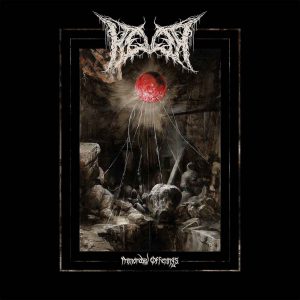 Brutal death metal with mild technicality and distinctive staging of themes that are held together by a subtle sense of melody, Kever specializes in producing distinctive songs evocative of certain moments in time, and though this, creating an indirect atmosphere that maintains the intensity of classic death metal. Riffs work upward from the cudgel-primitive to a certain elegance like that of Russian classical, arching over their founding themes to reach a conclusion which was not evident from the starting point.
Brutal death metal with mild technicality and distinctive staging of themes that are held together by a subtle sense of melody, Kever specializes in producing distinctive songs evocative of certain moments in time, and though this, creating an indirect atmosphere that maintains the intensity of classic death metal. Riffs work upward from the cudgel-primitive to a certain elegance like that of Russian classical, arching over their founding themes to reach a conclusion which was not evident from the starting point.
Satan
Cruel Magic
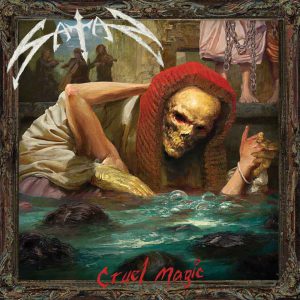 Starting out along with Blitzkrieg in the range of NWOBHM that verged on the edge of speed metal, Satan use varied riff shapes and more distinctive harmonic shapes to each song. These chord progressions allow them to situate their riffs on a topography which keeps them distinctive, even if on this album riffcraft itself seems more straightforward than on some of their more id-oriented earlier work.
Starting out along with Blitzkrieg in the range of NWOBHM that verged on the edge of speed metal, Satan use varied riff shapes and more distinctive harmonic shapes to each song. These chord progressions allow them to situate their riffs on a topography which keeps them distinctive, even if on this album riffcraft itself seems more straightforward than on some of their more id-oriented earlier work.
Deceased
Ghostly White
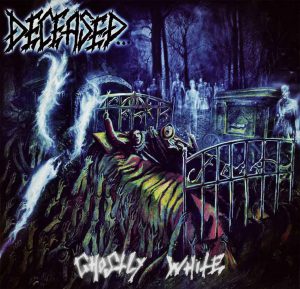 Older Deceased had its glories, namely highly technical rhythms and songs which used more than the handful of five-note modes common to metal, but ever since its side-project Doomstone took off, this band has embraced its heavy metal heritage to make music with an inner melody that keeps up the linebacker-smuggling-meth rhythmic intensity of death metal. Ghostly White shows this band blending the past four decades of metal into one voice and achieving its musical peak.
Older Deceased had its glories, namely highly technical rhythms and songs which used more than the handful of five-note modes common to metal, but ever since its side-project Doomstone took off, this band has embraced its heavy metal heritage to make music with an inner melody that keeps up the linebacker-smuggling-meth rhythmic intensity of death metal. Ghostly White shows this band blending the past four decades of metal into one voice and achieving its musical peak.
Phosphore Blanc
Fascist Sludge
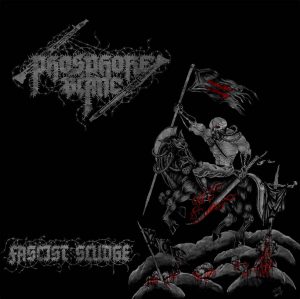 Imagine a cross between Eyehategod and Terrorizer with modifications to make it sound contemporary to both war metal and metalcore-influenced grindcore, and you have Phosphore Blanc (apparently, French for “white phosphorous”). Looking past the obviously provocative teenage iconography, this band presents a series of talented riffs combined in songs that hold together through dedication to momentum but have an insightful internal binary monologue between riff and response. A fast, ripping grindcore riff runs straight into a mildly melodic sludge riff, and at the end, a melodic theme emerges that may not quite tie the two together, but more likely, directly answers them. No fat on the bones, and inertia serves the songs, which gives this a place in the evolving canon of grindcore-influenced metal.
Imagine a cross between Eyehategod and Terrorizer with modifications to make it sound contemporary to both war metal and metalcore-influenced grindcore, and you have Phosphore Blanc (apparently, French for “white phosphorous”). Looking past the obviously provocative teenage iconography, this band presents a series of talented riffs combined in songs that hold together through dedication to momentum but have an insightful internal binary monologue between riff and response. A fast, ripping grindcore riff runs straight into a mildly melodic sludge riff, and at the end, a melodic theme emerges that may not quite tie the two together, but more likely, directly answers them. No fat on the bones, and inertia serves the songs, which gives this a place in the evolving canon of grindcore-influenced metal.
Master
Vindictive Miscreant
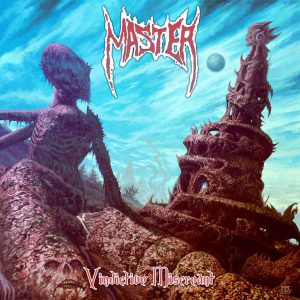 Emerging from the proto-death era of metal, Master combined punk with heavy rock and the rising underground metal sound to make very basic riffs that emphasized slow chord changes with fast strumming, giving it a unique droning sound and conventional choruses. With Vindictive Miscreant the band incorporates more riffs and stacks themes against one another, keeping a high-speed approach that maintains energy without being too monolithic, while using chanted vocals that create a strong rhythmic hook which stays consistent across the shifting riff contexture.
Emerging from the proto-death era of metal, Master combined punk with heavy rock and the rising underground metal sound to make very basic riffs that emphasized slow chord changes with fast strumming, giving it a unique droning sound and conventional choruses. With Vindictive Miscreant the band incorporates more riffs and stacks themes against one another, keeping a high-speed approach that maintains energy without being too monolithic, while using chanted vocals that create a strong rhythmic hook which stays consistent across the shifting riff contexture.
Black Funeral
The Dust and Darkness
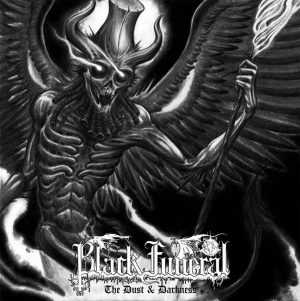 Combining chaotic black metal with the flowing melodic styles of Gorgoroth and Abigor, this American band like to create ritual song structures based around a simple rhythm, and then drop in shimmering descents of notes strummed quickly in a wash of distortion, projecting onto the listener a sensation of vast movement around a single point of view that is moving through the pattern of the ritual.
Combining chaotic black metal with the flowing melodic styles of Gorgoroth and Abigor, this American band like to create ritual song structures based around a simple rhythm, and then drop in shimmering descents of notes strummed quickly in a wash of distortion, projecting onto the listener a sensation of vast movement around a single point of view that is moving through the pattern of the ritual.
Runemagick
Evoked From Abysmal Sleep
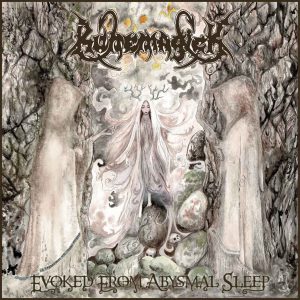 Looking for a way to infuse doom metal with a dose of doom-death, Runemagick relies on familiar riff forms and lots of strobing palm-muted power chords, but makes this formula stick together with a good sense of internal contrast and dynamic motion. This prevents boredom and makes the despairing atmosphere rise above itself, mutating in Protean forms to produce a song within the song formed of that which breaks from the overwhelming momentum of futility and darkness. The title needs a bit of work however.
Looking for a way to infuse doom metal with a dose of doom-death, Runemagick relies on familiar riff forms and lots of strobing palm-muted power chords, but makes this formula stick together with a good sense of internal contrast and dynamic motion. This prevents boredom and makes the despairing atmosphere rise above itself, mutating in Protean forms to produce a song within the song formed of that which breaks from the overwhelming momentum of futility and darkness. The title needs a bit of work however.
Summoning
With Doom We Come
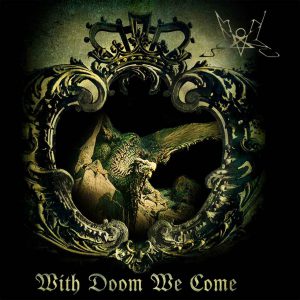 Summoning does best when a concept inspires an album, but for now, they content themselves with upholding the style they have invented of slow long-melody black metal riffs in the Ancient or Graveland style accompanied by keyboards and medieval instruments, using the world music style drumming of their later albums. Songs seem to develop previous concepts and focus more on supporting vocals, which makes this music both more accessible and easier to integrate with multiple layers of instrumentation.
Summoning does best when a concept inspires an album, but for now, they content themselves with upholding the style they have invented of slow long-melody black metal riffs in the Ancient or Graveland style accompanied by keyboards and medieval instruments, using the world music style drumming of their later albums. Songs seem to develop previous concepts and focus more on supporting vocals, which makes this music both more accessible and easier to integrate with multiple layers of instrumentation.
Retortion Terror
Retortion Terror
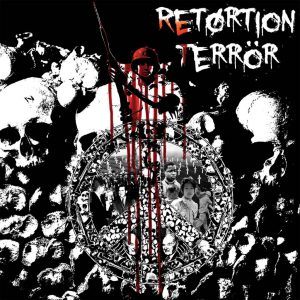 Intensifying the textural language of grindcore into a parallax of continuous perspective distortion, Retortion Terror stacks riffs in a linear order that then breaks to comment on itself, wrestling development out of the clash of forms that suddenly make sense as their context expands to include earlier references as pieces of later ones.
Intensifying the textural language of grindcore into a parallax of continuous perspective distortion, Retortion Terror stacks riffs in a linear order that then breaks to comment on itself, wrestling development out of the clash of forms that suddenly make sense as their context expands to include earlier references as pieces of later ones.
Archgoat
The Luciferian Crown
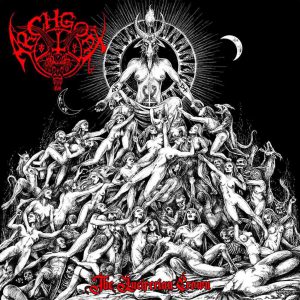 War metal evolved from the collision between primitive black metal and grindcore, taking what bands like Beherit, Blasphemy, Impaled Nazarene, and Sarcofago were doing and re-infusing it with primal hardcore and grinding simple riff-based bands. Archgoat operates on the double rows of lower five frets almost exclusively, but produces a number of distinctive rhythm and riff shapes which it then opposes with a handful of related riffs and variations, creating an atmosphere of Darwinian violence with enough variety to bring out depth and keep interest. Huge parts of this album are indistinguishable from a quality later model hardcore punk album or a more instrumentally competent early grindcore work.
War metal evolved from the collision between primitive black metal and grindcore, taking what bands like Beherit, Blasphemy, Impaled Nazarene, and Sarcofago were doing and re-infusing it with primal hardcore and grinding simple riff-based bands. Archgoat operates on the double rows of lower five frets almost exclusively, but produces a number of distinctive rhythm and riff shapes which it then opposes with a handful of related riffs and variations, creating an atmosphere of Darwinian violence with enough variety to bring out depth and keep interest. Huge parts of this album are indistinguishable from a quality later model hardcore punk album or a more instrumentally competent early grindcore work.
Therion
Beloved Antichrist
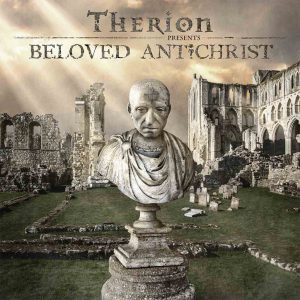 Everyone wants to make Queensrÿche Operation Mindcrime for a new generation, forgetting perhaps that what made it an epic album was its complete lack of alignment to an answer, suggesting only a hopelessness and poetry to being adrift in an inevitably declining age. Therion, following up on its career of death metal and then power metal band, now shifts into rock opera territory with Beloved Antichrist, a three-and-a-half hour epic that is equal parts cheese, virtuosity, and old fashioned heavy metal with the subtlety of Mannheim Steamroller meets AC/DC at a Trans-Siberian Orchestra show. And yet, this well-executed opus brings to mind the most ambitious days of metal.
Everyone wants to make Queensrÿche Operation Mindcrime for a new generation, forgetting perhaps that what made it an epic album was its complete lack of alignment to an answer, suggesting only a hopelessness and poetry to being adrift in an inevitably declining age. Therion, following up on its career of death metal and then power metal band, now shifts into rock opera territory with Beloved Antichrist, a three-and-a-half hour epic that is equal parts cheese, virtuosity, and old fashioned heavy metal with the subtlety of Mannheim Steamroller meets AC/DC at a Trans-Siberian Orchestra show. And yet, this well-executed opus brings to mind the most ambitious days of metal.
Trenchant
Martial Chaos
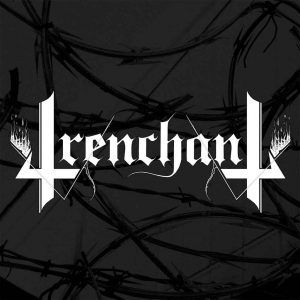 Attempting to infuse some Celtic Frost styled thematic sensibility into war metal, Trenchant maintains the ripping riffs of that genre but fixes them into song forms that fit the black metal ideal of making opposites collide and then bringing them forth in an uneven synthesis which reveals the savagery and grandeur of nature that is present in all patterns upon Earth and in the heavens. Much of this sounds like early Graveland with double-speed Hellhammer or Beherit riffs worked within its clashes like gold thread woven into a rough blanket, with the glimmers of intrigue bringing the rest into an ambiguous, esoteric level which preserves its mystery.
Attempting to infuse some Celtic Frost styled thematic sensibility into war metal, Trenchant maintains the ripping riffs of that genre but fixes them into song forms that fit the black metal ideal of making opposites collide and then bringing them forth in an uneven synthesis which reveals the savagery and grandeur of nature that is present in all patterns upon Earth and in the heavens. Much of this sounds like early Graveland with double-speed Hellhammer or Beherit riffs worked within its clashes like gold thread woven into a rough blanket, with the glimmers of intrigue bringing the rest into an ambiguous, esoteric level which preserves its mystery.
Monstrosity
The Passage of Existence
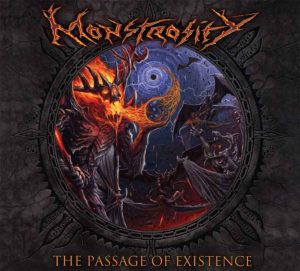 Searching for a hybrid between the new metalcore-infused “progressive death metal” and old school underground death metal, Montrosity alight on a mixture of progressive and death metal styles that uses riff techniques from the newer without going into its full randomness. This allows the band to showcase some powerful riffs, melodies, and a newfound appreciation for the use of distinctive frameworks of tones, like structural chord progressions, on which to hang those riffs. The result emphasizes the styles of death metal with its musicality understated behind the technique.
Searching for a hybrid between the new metalcore-infused “progressive death metal” and old school underground death metal, Montrosity alight on a mixture of progressive and death metal styles that uses riff techniques from the newer without going into its full randomness. This allows the band to showcase some powerful riffs, melodies, and a newfound appreciation for the use of distinctive frameworks of tones, like structural chord progressions, on which to hang those riffs. The result emphasizes the styles of death metal with its musicality understated behind the technique.
Condemner
Burning The Decadent
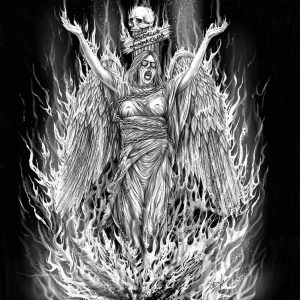 Grinding death metal got absorbed by fans of Incantation Onward To Golgotha, which is entirely understandable given how great that album is, but Condemner approaches grinding death metal, war metal, and post-classic underground metal with the idea that patterns should arise that make sense, more in a Demoncy and Immolation sort of way, than that a pattern should be applied to everything sheerly for aesthetic consistency that then swallows meaning (much as modern civilization, in its adherence to the optics of radical individualism, has made everything into conformist uniformity with quirky “flair” for surface distinction only). Condemner adds a bit of epic confrontation, Desecresy-style, to the roaring monolithic attack death metal that inspired it, creating a good deal of appealing atmosphere and tangible vitality.
Grinding death metal got absorbed by fans of Incantation Onward To Golgotha, which is entirely understandable given how great that album is, but Condemner approaches grinding death metal, war metal, and post-classic underground metal with the idea that patterns should arise that make sense, more in a Demoncy and Immolation sort of way, than that a pattern should be applied to everything sheerly for aesthetic consistency that then swallows meaning (much as modern civilization, in its adherence to the optics of radical individualism, has made everything into conformist uniformity with quirky “flair” for surface distinction only). Condemner adds a bit of epic confrontation, Desecresy-style, to the roaring monolithic attack death metal that inspired it, creating a good deal of appealing atmosphere and tangible vitality.
Judas Priest
Firepower
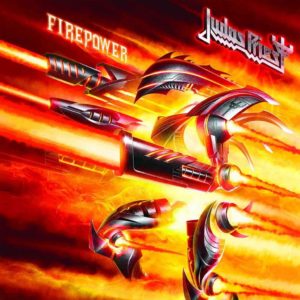 This restorative album brings back the days of Ram It Down Judas Priest, but mixes in a fair dose of power metal along with some touches from radio hard rock, tying together several audiences around an album that is not so much heavy as rockin’, in that every song has a driving energy, good melodic hook, and at least one moment of frisson when a melodic denouement turns into a clearer articulation of the hidden potential in its initial theme.
This restorative album brings back the days of Ram It Down Judas Priest, but mixes in a fair dose of power metal along with some touches from radio hard rock, tying together several audiences around an album that is not so much heavy as rockin’, in that every song has a driving energy, good melodic hook, and at least one moment of frisson when a melodic denouement turns into a clearer articulation of the hidden potential in its initial theme.
https://www.youtube.com/watch?v=Isu5JpXNzxI
Angantyr
Ulykke
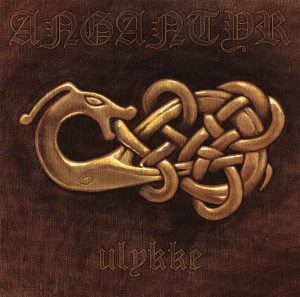 Bringing back the best of the early sentimental black metal which balanced a melancholic emptiness with an exuberant inner desire for adventure, Angantyr brings us an album in the rough style of Darkthrone Transilvanian Hunger but with a straightforward melody that unites a minor key theme with a wandering expansion that hints at a major key sensibility. The result feels like coming out of rain into spring sunlight and while simple, offers the hidden hope that black metal always nurtured.
Bringing back the best of the early sentimental black metal which balanced a melancholic emptiness with an exuberant inner desire for adventure, Angantyr brings us an album in the rough style of Darkthrone Transilvanian Hunger but with a straightforward melody that unites a minor key theme with a wandering expansion that hints at a major key sensibility. The result feels like coming out of rain into spring sunlight and while simple, offers the hidden hope that black metal always nurtured.
Nachtlieder
Lynx
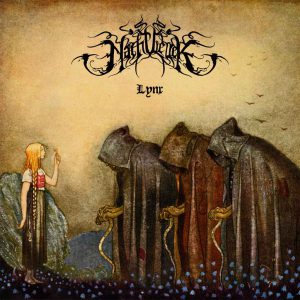 This ambitious foray attempts to fold post-metal styling back into the spirit of traditional black metal, and achieves a temporary balance at least which provides a fragile emotional backdrop for classic underground metal song structures, even if the phrasal riffs are mostly absent. With more development, this could unite the flowing style of black metal with the ambiguous but portentous depth and suggestion of traditional black metal.
This ambitious foray attempts to fold post-metal styling back into the spirit of traditional black metal, and achieves a temporary balance at least which provides a fragile emotional backdrop for classic underground metal song structures, even if the phrasal riffs are mostly absent. With more development, this could unite the flowing style of black metal with the ambiguous but portentous depth and suggestion of traditional black metal.
Internal Bleeding
Corrupting Influence
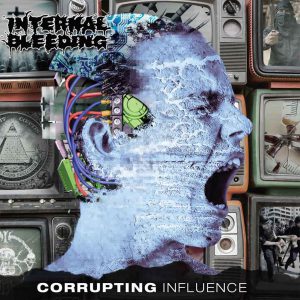 Picking up where Pantera and Meshuggah left off, slam metal like grindcore relies exclusively on sonic texturing through seemingly erratic rhythms that become coherent as their larger framework is revealed, and onto that Internal Bleeding adds a sense of melody that allows it to develop song structures to a rudimentary atmosphere in which it dangles uncertainty and a mental sensation of striving for order in an internally chaotic but externally organized time. This reminds me of 1950s outsider music which showed that underneath the chrome, glass, technology, and wealth, a deep organic rottenness pulsed at the center of modern society, in classic noir style. In fact, we might seem slam as the noir antipode to the surface-equals-core transparency of party music like Pantera, in which symbol correlated directly to content.
Picking up where Pantera and Meshuggah left off, slam metal like grindcore relies exclusively on sonic texturing through seemingly erratic rhythms that become coherent as their larger framework is revealed, and onto that Internal Bleeding adds a sense of melody that allows it to develop song structures to a rudimentary atmosphere in which it dangles uncertainty and a mental sensation of striving for order in an internally chaotic but externally organized time. This reminds me of 1950s outsider music which showed that underneath the chrome, glass, technology, and wealth, a deep organic rottenness pulsed at the center of modern society, in classic noir style. In fact, we might seem slam as the noir antipode to the surface-equals-core transparency of party music like Pantera, in which symbol correlated directly to content.
Iskandr
Euprosopon
 To achieve the obscure black metal atmosphere, one must introduce ambiguity with a sense of hidden potential, buried under layers of melancholia and nihilism, so that the emergence of a discoverable (opposite of universal) realm of possibility within existence can appear through the interaction of its parts, and not state explicitly in symbolic language as rock music, Soviet propaganda, and 1950s advertising jingles do. Iskandr bring out that ancient feeling through simple tracks that rely heavily on abrupt confrontation within otherwise balanced melody.
To achieve the obscure black metal atmosphere, one must introduce ambiguity with a sense of hidden potential, buried under layers of melancholia and nihilism, so that the emergence of a discoverable (opposite of universal) realm of possibility within existence can appear through the interaction of its parts, and not state explicitly in symbolic language as rock music, Soviet propaganda, and 1950s advertising jingles do. Iskandr bring out that ancient feeling through simple tracks that rely heavily on abrupt confrontation within otherwise balanced melody.
Drawn And Quartered
The One Who Lurks
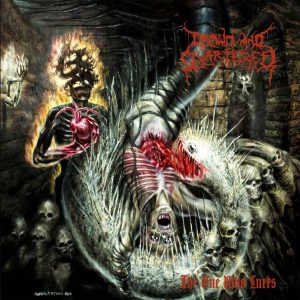 Drawn And Quartered moved from a percussive bludgeoning death metal band in the Morpheus Descends and Cianide style to a mid-paced death metal band which explores different riff styles as the basis for songs, leading to highly specific song structures and styles within a rougher-edged, highly idiosyncratic outsider death metal style.
Drawn And Quartered moved from a percussive bludgeoning death metal band in the Morpheus Descends and Cianide style to a mid-paced death metal band which explores different riff styles as the basis for songs, leading to highly specific song structures and styles within a rougher-edged, highly idiosyncratic outsider death metal style.
You might also like:
- The Best Underground Metal Of 2017
- The Best Underground Metal Of 2016
- The Best Underground Metal Of 2015
- The Best Underground Metal Of 2014
- The Best Underground Metal Of 2013
- The Best Underground Metal Of 2012
- The Best Underground Metal of 2011
- The Best Underground Metal Of 2010 (Annex)
- The Best Metal Albums Of 2008
- The Best Underground Metal 1999-2009
- The Best Underground Metal 1983-1998
Tags: 2018, Angantyr, archgoat, best of, black funeral, Black Metal, condemner, death metal, deceased, Drawn and Quartered, Grindcore, Heavy Metal, internal bleeding, iskandr, judas priest, kever, master, monstrosity, nachtlieder, phosphore blanc, progressive metal, retortion terror, Satan, slam metal, sludge, Speed Metal, Summoning, Therion, trenchant, underground metal
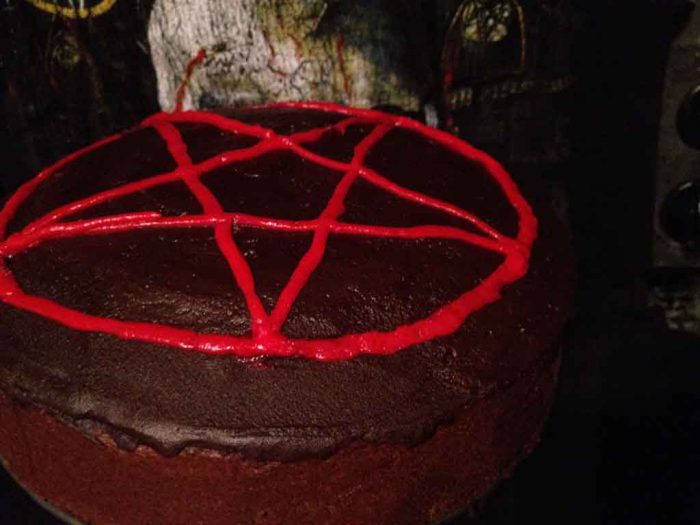


Thank you for reviewing the new SATAN ALBUM!!
Bloodypulp I luv you so much♥
Happy New Year
Build da Wall !
It wouldn’t be fair to miss it, nor to exclude it given that the new Judas Priest had to be in there…
It wouldn’t be fair to miss Sorcier Des Glaces, nor to exclude it given that the new Summoning wrongly be in there
https://www.deathmetal.org/review/sorcier-des-glaces-sorcier-des-glaces-2018/
What’s the most technical metal album you’ve heard this year, Brett?
you too bruv
go fuck yourself
So which one of these is the “best”?
Hard to say. Out of the flood of nonsense, these are the best alternatives I could find.
Phantom – Fallen Angel, bruh https://www.youtube.com/watch?v=WkKVIXzkVso
Judas Priest Firepower looks like the box for any modern graphics card. Sounds like it too. Satan sounds like old farts reverting to their bar rock days. Cool cover.
This list isnt very good except maybe Kever. It is not your fault. Nicholas and Johann nailed Necromaniac, Mefitis respectively. No comment on Deceased, their songs feel like they go on forever. Would add Obliteration and Zealotry to the best of the year and cap it off there.
New Xibalba?
Hmm….
https://nuclearwarnowproductions.bandcamp.com/album/ah-tza-xibalba-itzaes
this shit makes me wanna eviscerate a slave! Y come el corazon!
Me gusta
Brett actually likes the new Summoning album. Nice!
Therion – Beloved Antichrist: 3 and a half hours long, do I really want to go through my whole day’s supply of weed to sit through this? – asks the average man.
On the other hand, that Retortion Terror is really sick, and being able to run that album in a mile is something worth achieving.
The album of Drawn and Quartered I forgot to put it in my top and it is one of the best 2018, Deceased arrrrrchhhhhhh
Thanks Brett.
Pleasantly surprised by ‘Fascist Sludge’. If nothing else, sounds (coherently) menacing.
Where’s the review for the latest Into Oblivion album?
Brett, have you listened to any of these more than one time?
Also, have you listened to the new Sulphur Aeon?
I doubt most of these albums deserve to be listened more than once. Only Kever, Trenchant and maybe Condemner were above average.
I did like the new Judas Priest, but it is strange to see it under a list that reads “Underground Metal”. Strange also to see so many albums chosen. The new Summoning was nice but below average for the band, and Angantyr and Archgoat entries were not particularly special, in my opinion.
By the way, here’s another DMU-inspired list for those able to read Spanish: http://www.elnegrometal.es/los_mejores_discos_de_metal_de_2018.html
Therion? Really? Wow, this comes as a surprise, giving the fact that DMU’s staff has been quite vocal against the kind of music Therion has been releasing since 1995. I might as well check it out, I guess…
Quite a few surprising and odd choices of releases that haven’t even been reviewed in DMU this year (I think only about half have been featured previously). I know you’re struggling to get enough regular writers, but just out of curiosity: if these albums have merit, why weren’t they all reviewed this year instead of some of the other (mediocre or bad) albums that were reviewed? (this isn’t a criticism, by the way)
I thought the article was an ironic joke when I first scanned down the list saw the new Therion album listed. Perhaps it has strengths as a ‘rock opera’, but what metal content is there on the album?
Nevertheless, thanks for a well-written summary of the better releases from 2018, and a useful reminder of promising releases I haven’t yet listened to properly: Kever, Drawn & Quartered, Iskandr, Trenchant, Condemner.
The only release that’s getting repeat listens from me is Moenen of Xesbeth – Ancient Spells of Darkness. Way beyond the scene-hipster structureless garbage nwn usually puts out, this one conjures up classic Varathron, Ildjarn, Beherit, and Burzum while maintaining its own personality through simple and often slow riff progressions. Titles and aesthetic choices might be described as “generic,” though I would call it “self referential” metal, befitting the maturity of the genre. Musical choices are more intuitive than carefully thought out, leading to some less satisfying (but never regrettable) sections, but these are more than compensated for by long passages of honest inspiration, executed as naturally as breathing by the unique mind(s?) behind this release.
You forgot Varathron – Patriarchs of Evil.